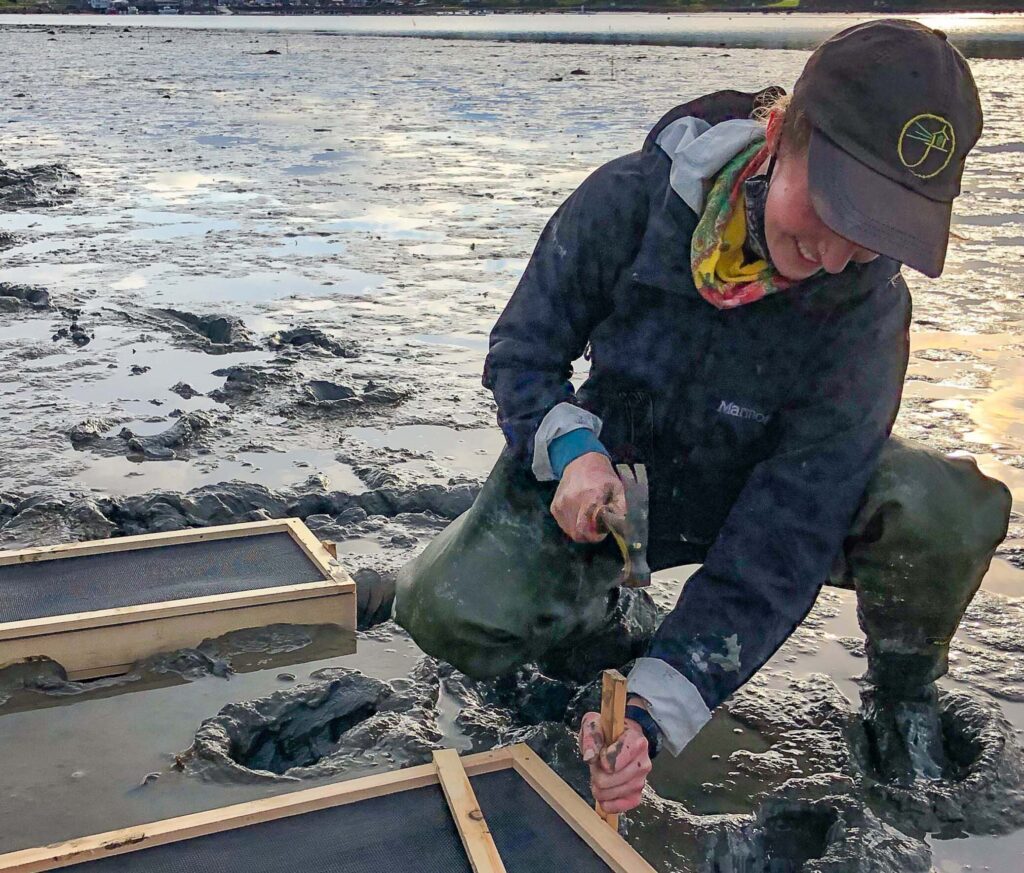Leslie, Stoll and Risley document local shellfish harvesting trends, changes

By studying the Damariscotta and Medomak River estuaries, University of Maine researchers have formally documented shifts in shellfish populations, from soft shell clams to oysters. Because Maine’s intertidal mudflats, such as those found in these estuaries, are difficult to study, this work filled an important gap in information about shellfish harvesting.
Research documented how tidal river ecosystems have changed over time and how local shellfish harvesters and other estuary users have adapted. This was the first time the knowledge of harvesters and experts working within these estuaries was documented, and findings have expanded the information available to communities who steward shellfish in Maine and beyond.
Graduate student Sarah Risley of the UMaine Darling Marine Center (DMC) led the study, published in the international scientific journal Ambio. Co-authors include Melissa Britsch, formerly of UMaine and now with the Maine Coastal Program of the Maine Department of Marine Resources, associate professor of marine policy and Joshua Stoll and professor of marine sciences Heather Leslie, both of the School of Marine Sciences. Stoll and Leslie are faculty fellows at the Mitchell Center.
“This was an incredible opportunity to learn about Maine’s intertidal ecosystems. I’m deeply grateful to everyone who shared their time and expertise,” said Risley, a resident of Wiscasset.
